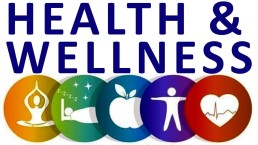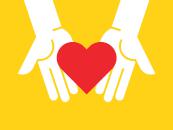Tagline
Health and Wellness
Lorem ipsum dolor sit amet. Eum architecto ipsa et animi commodi et alias rerum qui quas necessitatibus eum dolore fuga! Vel obcaecati quam hic repudiandae officiis quo error veritatis nam minima aliquid aut quod tempora!
Ex itaque facilis sit nihil quaerat nam nulla quisquam ea vero mollitia. In aliquam accusantium id perferendis quaerat est molestiae totam et voluptates internos! Ut quia quia sed quaerat ratione aut Quis recusandae qui aspernatur quam a magnam voluptates.



3 simple swaps for better heart health

Busy people may find it hard to take heart-healthy steps. These simple swaps can help.
Busy days make it hard to put heart health on the front burner. It just feels like you don’t have time for habits that keep the ticker in top shape — like exercising regularly, getting enough sleep, and eating a healthy diet. So maybe you take the stairs when you can, or you park farther away from a store to rack up a few extra steps each day. But what else can you do? Here are three things that might fit in your schedule.
Swap electronic communication for an in-person meeting
It’s fine if texting, emailing, social media, or Zoom calls are your primary means of communicating with others. But it’s not okay if those methods leave you feeling lonely or isolated — two problems linked to higher risks for heart disease, heart attack, or stroke, according to a scientific statement from the American Heart Association in the Journal of the American Heart Association.
To combat loneliness and isolation, try to replace some of your electronic back-and-forth with people with in-person meetings. Maybe you can find room in your schedule for a quick walk, cup of coffee, or brief lunch with a friend or colleague.
“Time spent face-to-face helps connect you to others and may make you feel less isolated,” explains Matthew Lee, a sociologist and research associate at Harvard University’s Human Flourishing Program. “Being physically co-present can help you feel more engaged with others, more valued, and more likely to feel a sense of shared identity — all things that may help ease loneliness. This is why some doctors are starting to engage in ‘social prescribing,’ including suggesting that people get involved in volunteering and other activities that build in-person social relationships.”
A recent study published in the International Journal of Public Health by Lee and a team of Harvard-led researchers suggests that better social connectedness may reduce the risk of being diagnosed with depression or anxiety. Both are associated with heart disease or making existing heart conditions worse.
Swap an unhealthy breakfast for a healthier one
Is your typical breakfast something quick and full of refined (not whole) grains, processed meat, saturated fat, or added sugar? Eating that kind of food regularly may drive up calories, weight, blood sugar, or cholesterol levels — and that’s not good for your heart.
Instead, chose breakfast foods rich in fiber, a type of carbohydrate that either passes through the body undigested (insoluble fiber) or dissolves into a gel (soluble fiber) that coats the gut.
Not only does fiber help digestion, it also
-
- traps, mops up, and lowers bad [LDL] cholesterol that can lead to clogged arteries
-
- controls blood sugar and lowers the risk for diabetes, which is strongly associated with heart attacks and strokes
-
- may help fight chronic inflammation, which plays a role in clogging arteries and causing heart attacks.
Fruits, nuts, seeds, whole grains (oats, barley, quinoa) and many other foods are rich in fiber. Try these fiber-rich breakfast ideas:
-
- microwaved oatmeal (heat a 1/2 cup of oatmeal with almost a cup of low-fat milk for about two minutes)
-
- a serving of cooked quinoa (cold, if you have it in your fridge) with a dollop of nonfat Greek yogurt, berries, and granola
-
- whole-grain cereal with milk (go for cereals with the highest amounts of whole grains and lowest amounts of added sugars)
-
- a slice of whole-grain toast with two tablespoons of nut butter (like almond or peanut butter)
-
- one or two handfuls of homemade trail mix (use your favorite unsalted nuts, sunflower seeds, and dried fruit such as raisins or apricots).
Swap a few minutes of scroll time for meditation time
If you ever take a break from your busy day to scroll through news on your phone or computer, chances are you can also find a little time to meditate, which is important for heart health. Research indicates that people who meditate have lower rates of high cholesterol, diabetes, high blood pressure, stroke, and coronary artery disease compared with people who don’t meditate.
What’s the connection? Meditating triggers the body’s relaxation response, a well-studied physiological change that appears to help lower your blood pressure, heart rate, breathing rate, oxygen consumption, adrenaline levels, and levels of the stress hormone cortisol.
The great news: it doesn’t take much time to reap the heart-healthy benefits of meditating — just about 10 to 20 minutes per day.
Ideas for quick ways to meditate in a busy day include sitting quietly, closing your eyes, and
-
- focusing on your breathing, without judging sounds you hear or thoughts that pop into your head
-
- listening to a guided meditation, which uses mental images to help you relax
-
- listening to a recording of calming sounds such as waves, a bubbling brook, or gentle rain.
Just try to calm your brain for a few minutes a day. Soon, you may find you’ve become better at meditating and better at practicing other heart-healthy habits, no matter how busy you are.
Disclaimer: This content, regardless of date, should not be used as a substitute for direct medical advice from your doctor or other qualified clinician. Distributed by The New York Times Licensing Group
三个简单的替代,维护心脏健康

繁忙的人可能会发现采取有益于心脏健康的措施相当不易,或许下面这些简单的替代 操作能有所帮助
忙忙碌碌的日子让人很难把心脏健康放在首位,感觉没有时间养成让身体保持最 佳状态的习惯——比如定期锻炼、充足的睡眠和健康的饮食,所以您可能选择走楼梯 或者将车停在离商店较远的地方,让自己每天多走几步路。但除此以外,我们还可以 做些什么呢?下面这三个操作或许可以列入您的日程安排。
将电子通讯改为面对面会议
虽然您将短信、电子邮件、社交媒体或Zoom通话作为您与他人沟通的主要方式,是没有问题的,但如果这些方法让您感到孤独或孤立,就不好了——美国心脏协会在《美国心脏协会杂志》上发表了一份科学声明,孤独感和孤立感与心脏病、心脏病发作 或中风的患病高风险存在关联。
为了对抗孤独感和孤立感,尝试用面对面的会议来代替一些电子交流,这样一来,您还可以在日程安排中腾出空间进行快步走、喝杯咖啡或与朋友或同事共进午餐。
“面对面的时间有助于我们与他人建立联系,并让我们感觉不那么孤立,”哈佛大 学人类繁荣计划的社会学家兼研究员马修·李解释道。“身体的共处可以帮助我们感觉与
他人有更多的接触,更受重视,更有可能感受到一种认同感——所有这些都有助于缓 解孤独感。这就是为什么一些医生开始建议‘社交处方’,包括建议人们参与志愿服务和其他建立面对面的社会关系的活动。”
马修·李和哈佛大学领导的研究小组最近在《国际公共卫生杂志》上发表了一项研究表明,更好的社会联系会降低患有抑郁或焦虑的风险,而两者都与心脏病有关或能够使现有的心脏病恶化。
用健康的早餐替代不健康的早餐
您的典型早餐是快速且富含精制谷物(非全谷物)、加工肉类、饱和脂肪或添加 糖的食物吗?经常吃这类食物会增加卡路里、体重、血糖或胆固醇水平——这对您的心脏不利。
取而代之,您可以选择富含纤维的早餐食品。纤维是一种碳水化合物,未经消化的纤维可以排出体外(不溶性纤维),或者溶解成覆盖肠道的凝胶(可溶性纤维)。
纤维不仅能帮助消化,还能
-
- 捕获、清除和降低可能导致动脉阻塞的坏[LDL]胆固醇
-
- 控制血糖并降低患糖尿病的风险,糖尿病与心脏病和中风密切相关
-
- 有助于对抗慢性炎症。慢性炎症会堵塞动脉并引起心脏病。
水果、坚果、种子、全谷物(燕麦、大麦、藜麦)和许多其他食物都富含纤维。尝试这些富含纤维的创意早餐:
-
- 用微波炉加热燕麦片(将 1/2 杯燕麦片与近一杯低脂牛奶一起加热约两分钟)。
-
- 一份煮熟的藜麦(冷的,如果你的冰箱里有的话)搭配一块脱脂希腊酸奶、浆果和格兰诺拉麦片。
-
- 全谷麦片加牛奶(选择全谷物含量最高且含糖量最低的麦片)。
-
- 一片全麦吐司加两汤匙坚果酱(如杏仁酱花生酱)。
-
- 一两把自制什锦干果(使用您最喜欢的无盐坚果、葵花籽和干果,如葡萄干或杏干)。
将浏览屏幕的几分钟时间替换成冥想时间
如果您在忙碌的一天中能够抽出时间在手机或电脑上浏览新闻,那么您就可以找出一点时间进行冥想。冥想对心脏健康很重要。研究表明,与不进行冥想的人相比,冥想的人患高胆固醇、糖尿病、高血压、中风和冠状动脉疾病的几率低。
这之间有什么联系呢?冥想会触发身体的放松反应,这是一种经过充分研究的生理变化,有助于降低血压、心率、呼吸频率、耗氧量、肾上腺素水平和应激激素皮质
醇水平。
好消息:您不需要花太多时间就能获得冥想对心脏健康的好处——每天只需 10 到20 分钟。
在忙碌的一天中快速冥想的方法包括安静地坐着、闭上眼睛,以及
-
- 专注于您的呼吸,不判断您听到的声音或突然出现的想法。
-
- 聆听引导式冥想,利用心理图像帮助您松。
-
- 聆听平静声音的录音,例如海浪、潺潺小或细雨。
每天尝试让大脑平静几分钟。很快,您就会发现无论自己多忙,都更擅长冥想,并且更擅长练习其他有益于心脏健康的习惯。
免责声明:不论文章发表日期早晚,本文内容均不应替代您的医生或其他合格临床医 生直接给予的医疗建议 发行方:纽约时报版权部
***The End***
